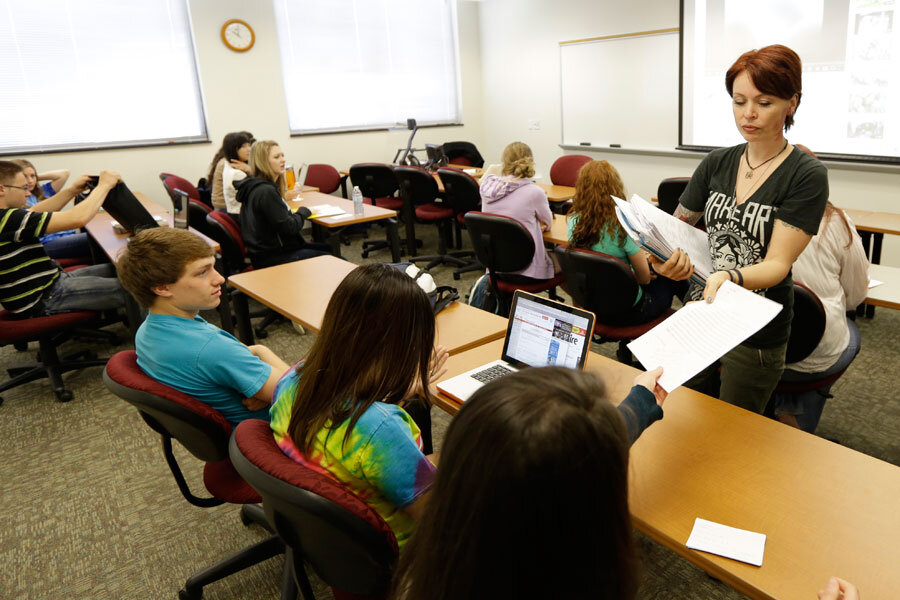While university presidents earn millions, many professors struggle
Loading...
In a survey of private US universities released Sunday by the Chronicle of Higher Education, the typical president at a private university earned an annual salary of $436,429 in 2013, up 5.6 percent from the year before.
In all, 32 private university presidents earned $1 million or more in compensation in 2013. And private college presidents aren’t the only ones raking it in. The average public college president earned over $428,000 in 2014, reported the Chronicle.
“Many times when I talk to trustees, they refer to university presidents as running companies – which they could also do if they chose to enter the private sector – so to keep a president at the university they will pay what it takes,” Sandhya Kambhampadi, the lead author of the Chronicle report, tells The Christian Science Monitor in a phone interview Tuesday. “They will pay the market value.”
But the cushy salaries of both public and private university presidents stands in stark contrast to the lifestyle of adjunct professors, a growing demographic in institutions of higher education.
"Adjunct" is a term used for non-tenured, part-time professors, who receive no benefits, no office and typically paid between $3,000 and $5,000 per course. In 2013, NPR reported that these itinerant teachers make up 75 percent of college professors, and their pay averages between $20,000 and $25,000 annually. And this trend may be long term, as three in four college professors are not on a tenure track, the American Association of University Professors (AAUP) reports.
“The core mission of the university is instruction and research,” Gwen Bradley, an AAUP senior program officer, tells The Christian Science Monitor in a phone interview Tuesday. “These should be funded first before raising presidents or coaches salaries. These [missions] should take priority.”
According to a 2015 study by the UC Berkeley Labor Center, 25 percent of part-time college faculty and their families are enrolled in a at least one public assistance program such as Medicaid or food stamps.
Most adjunct professors are forced to work two jobs to make ends meet.
“Every day I live two people’s lives and it’s fatiguing. Every day I need more time with students while being pulled away from them,” Lee Hall, an adjunct professor for the Legal Education Institute at Widener University, writes in an opinion piece for the Guardian. Prof. Hall writes that she makes about $15,000 per year. Widener's president, James Harris, made $997,140 in 2013
And it’s not a factor of professors preferring part-time employment – more than 73 percent of part-time professors want full-time gigs but can’t find one, a 2015 study published in The Journal of Higher Education reports.
“I thought my time here would eventually be rewarded with an offer of full-time employment. I was wrong, and should have known better,” former adjunct professor Dana Biscotti Myskowski writes on blog in November. “I can’t teach for poverty wages and zero benefits any longer … It’s an unlivable wage.”
But the facts still stand. The private colleges with the highest-paid presidents also have the highest percentage of adjunct professors.
A 2014 study by the Institute for Policy Studies found a similar trend among schools with the highest paid presidents: part-time adjunct faculty increased 22 percent faster than the national average.
Three universities in New York – Columbia University, New York University, and the New School – had some of the most adjunct faculty at 60, 79 and 91 percent respectively. And according to the recently released Chronicle survey, all three university presidents at these schools earned over $1 million each in 2013.








